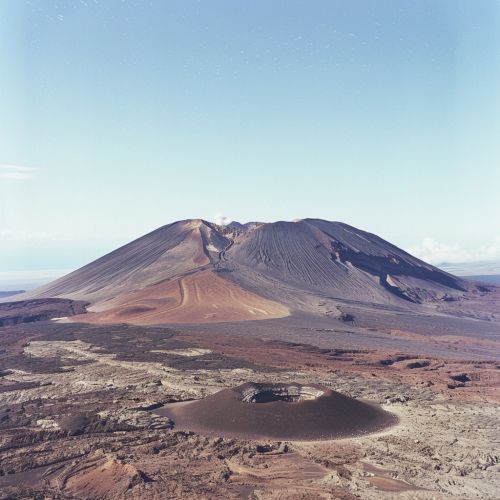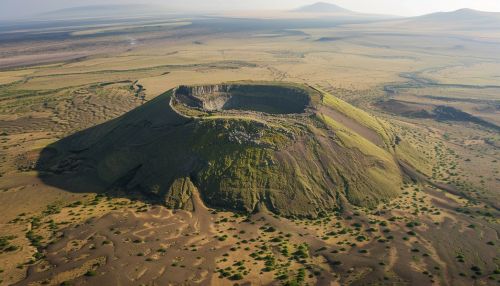Shield volcanoes
Introduction
A shield volcano is a type of volcano named for its low profile, resembling a warrior's shield lying on the ground. This is caused by the highly fluid (low viscosity) lava erupted, which travels farther than lava erupted from a stratovolcano, and results in the wide, gently sloping shape. These volcanoes are built almost entirely of fluid lava flows. Flow after flow pours out in all directions from a central summit vent, or group of vents, building a broad, gently sloping cone of flat, domical shape, with a profile much like that of a warrior's shield.


Formation
Shield volcanoes are formed by basalt, a type of lava that is very fluid when erupted. For this reason, these volcanoes are not steep (you can't pile up a fluid that easily flows downhill). Eruptions are usually not explosive, and the lava travels far, building up in layers to form a broad, shield-like shape. The eruptions of shield volcanoes are only explosive if water somehow gets into the vent, otherwise, they are characterized by low-explosivity effusive eruptions.
Characteristics
Shield volcanoes are distinguished from the three other major types of volcanoes, stratovolcanoes, cinder cones, and lava domes, by their structural form, a consequence of their particular magmatic composition. Shield volcanoes are built by effusive eruptions, which flow out in all directions to create a shield, hence the name. Shield volcanoes are usually found in the middle of a tectonic plate.
Examples
The largest shield volcano on earth is Mauna Loa in Hawaii. Other famous shield volcanoes include Kilauea, also in Hawaii, and Skjaldbreiður in Iceland. The shield volcanoes of Hawaii are built of lava erupting from vents along a central fissure system, and given enough time, this process will build the large shield volcano.
